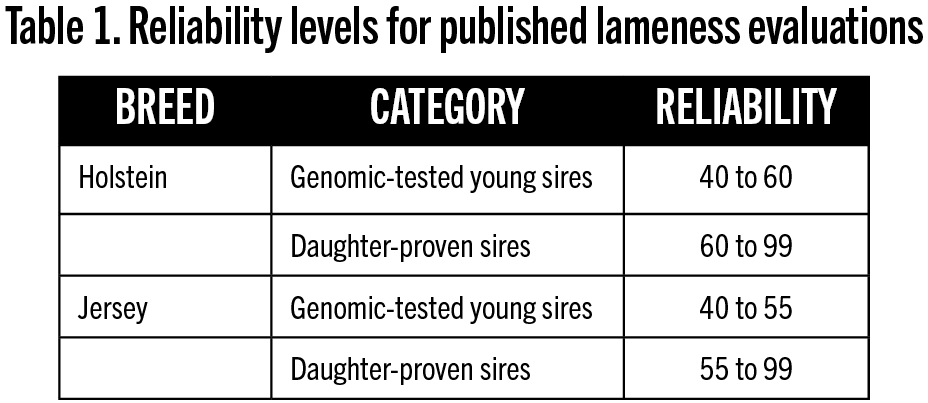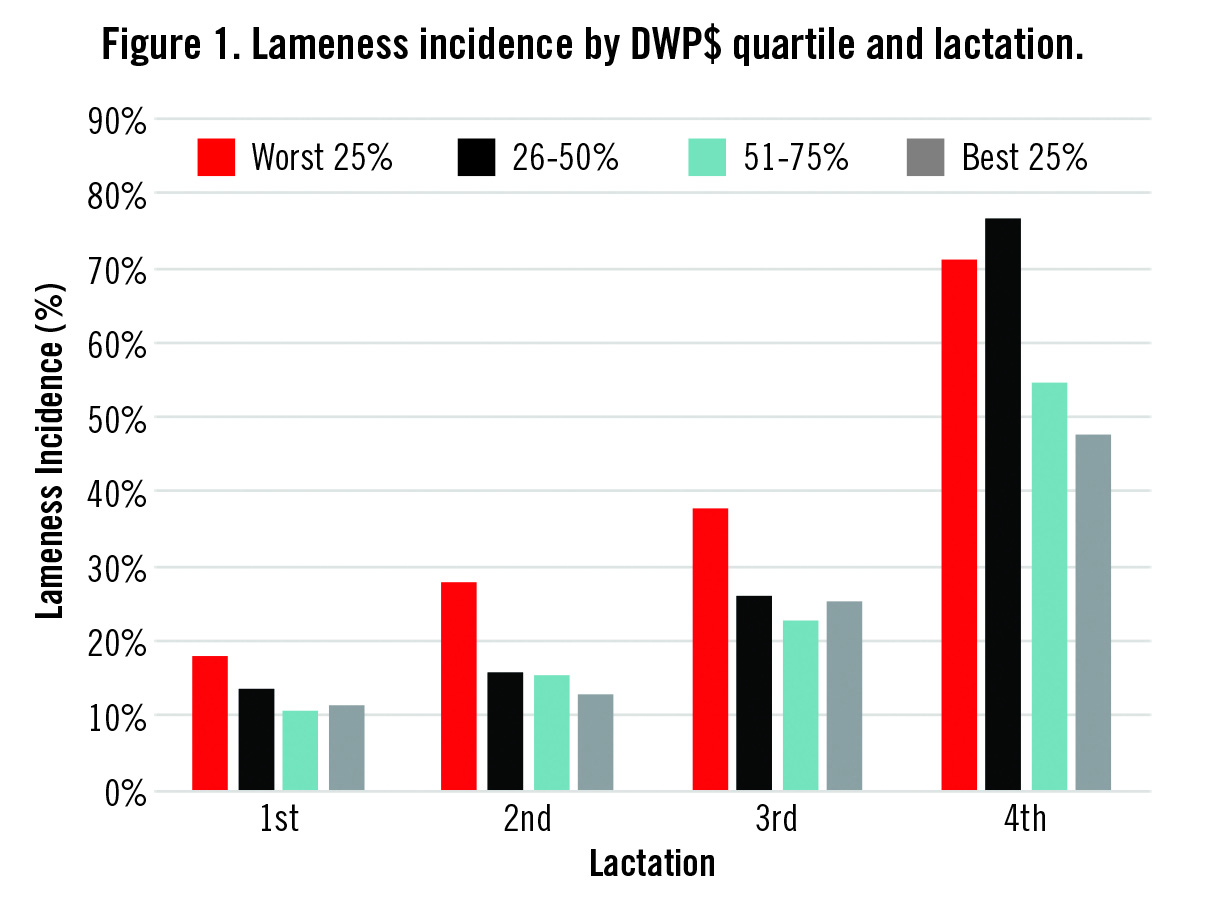By: Chuck Sattler, Vice President of Genetic Programs, Select Sires Inc.
Traditionally, we have selected sires for traits like Foot Angle, Legs Side View and Feet and Legs Composite (FLC) to improve mobility in our cows. While this strategy has been employed for decades, it has not been as impactful on reducing lameness as we would like. In recent years, new genetic evaluation tools have been developed that more directly address lameness resistance. These tools remain underused and deserve attention and use in sire selection decisions.
AVAILABLE FROM ZOETIS
The lameness evaluation from Zoetis, part of the CLARIFIDE® Plus testing platform, is an example of one of these new evaluations. Data from lameness events come from health events recorded in a wide range of CLARIFIDE-tested, commercial
dairy farms. Lameness genomic evaluations are routinely available for Select Sires’ bulls for both Holstein and Jersey breeds.

Lameness evaluations are expressed as standardized transmitting abilities (STAs) with an average of 100. Evaluations generally range from 85 to 115. Higher values indicate more resistance to lameness
and are preferred.
Zoetis lameness evaluations have been publicly available since 2016. They’ve been available long enough to analyze how they perform and whether they effectively identify meaningful genetic differences between bulls.
One way to analyze the accuracy of lameness traits is to review how lameness evaluations compare to other established genetic evaluations. This is most effective when done using high-reliability sires. We studied Zoetis lameness evaluations
for Select Sires bulls that have 100 or more daughters in their Council on Dairy Cattle Breeding (CDCB) evaluations. Since lameness is a management challenge on most dairy farms, we should see a positive correlation between the STA values for lameness and predicted transmitting abilities (PTAs) for Productive Life (PL) and Livability (LIV). Select Sires’ genetic lineup shows a correlation of +0.27 between lameness STA and PTA PL, and +0.29 between lameness STA and PTA LIV. In contrast, the same group of bulls shows a correlation of -0.07 between FLC and PTA PL, and -0.05 between FLC and PTA LIV.
ON-FARM VALIDATION
Zoetis has conducted several validation studies published in the Journal of Dairy Science® documenting the predictive power of lameness evaluations. One study published in 2017 tracked the performance of genomic-tested animals
through their next lactation. The study tracked the performance of 3,400 heifers and cows from 11 different herds. Animals were grouped based on their STAs for lameness. Lameness incidence was 33 percent lower for top quartile animals
compared to those in the bottom quartile.
A more recent study looked at the value of including lameness in Dairy Wellness Profit Index® (DWP$®
). Lameness receives a relative weighting of 5 percent in the Holstein version of DWP$ and a 3 percent relative weighting in the Jersey version.
The effectiveness of DWP$ was analyzed by tracking 2,185 genomic tested heifers from 11 herds through their careers as lactating cows. Differences in lameness incidence were statistically significant between the DWP$ groups tracked in these herds. Differences by lactation are shown in Figure 1. Lameness incidence was reduced by 50% for animals in the top quartile for DWP$ as compared to those in the bottom quartile.

THE BOTTOM LINE
Lameness continues to be an ongoing challenge for dairies. Indirect selection to improve lameness resistance by using a variety of conformation traits has not been effective. Direct evaluations for lameness are now routinely available and their track record shows they have a solid relationship with improved longevity and profitability. If lameness is not currently included as part of your sire selection criteria, you should strongly consider adding it to create a roster of healthy, trouble-free cows..
References
Adams, A. E., J. E. Lombard, C. P. Fossler, I. N. Román-Muñiz, C. A. Kopral. Associations between housing and management practices and the prevalence of lameness, hock lesions, and thin cows in US dairy operations. J. Dairy Sci. 100:
2119-2136.
Cook, N. B., J. P. Hess, M. R. Foy, T. B. Bennett, R. L. Brotzman. Management characteristics, lameness, and body injuries of dairy cattle housed in high-performance dairy herds in Wisconsin. J. Dairy Sci. 99:5879-5891.
Fessenden, Brenda, Daniel J. Weigel, Jason Osterstock, David T. Galligan, Fernando Di Croce. Validation of genomic predictions for a lifetime merit selection index for the US dairy industry. J. Dairy Sci. 103:10414-10428.
McNeel, Anthony K., Brenda C. Reiter, Dan Weigel, Jason Osterstock, Fernando Di Croce. Validation of genomic predictions for wellness traits in US Holstein cows. J. Dairy Sci. 100:9115-9124.
Vukasinovic, N., N. Bacciu, C. A. Przybyla, P. Boddhireddy, and S. K. DeNise. Development of genetic and genomic evaluation for wellness traits in US Holstein cows. J. Dairy Sci. 100:428-438